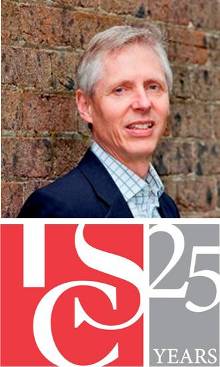A week in Istanbul for the IIC Congress really provided little more opportunity than to soak up the flavour of the place. There is so much to do and see there, and one gets the feeling that it is an increasingly confident place economically ( though still fragile politically I understand) . One American friend commented that where new furniture in the US used to say Made in China it now says Made in Turkey.
It was therefore particularly opportune that we had a key note address delivered (admittedly by video) by Turkish Nobel prize laureate for literature Orhan Pamuk. I must admit to not having heard of him but am busy making amends by reading his wonderfully complex Name of the Rose type book called ‘ My Name is Red’. Pamuk is probably most famous for his autobiographical Istanbul: Memories and the City in which he sees the melancholy longing of hüzün as the hidden key to Istanbul. Hüzün is a Turkish word whose Arabic root (it appears five times in the Koran) denotes a feeling of deep spiritual loss but also a hopeful way of looking at life, “a state of mind that is ultimately as life-affirming as it is negating.” Pamuk saw in his childhood hüzün manifested by the slow collapse of the once powerful Ottoman empire hanging like a pall over the city and its citizens. Written in 2004, his book reveals how far the city has moved in the last 6 years, and Pamuk’s address to the Congress was all about how in the new confidence that city now shows, there is real danger that the past will be wiped out.
And his key note address was contextually perfect for the Congress as it allowed delegates to get in the space for a number of papers on how fragile is this ancient part of the world especially when assailed by the joint forces of development and tourism. High profile sites whether they be the Pyramids, Petra or the Acropolis will always attract international attention and therefore the support and funding of such bodies as the World Monuments Fund, the Getty etc, but these are but a few of the thousands of heritage sites around the Eastern Mediterranean that need protection and conservation.
We heard about the high profile sites, whether it was control of biodeterioration on the monuments of the Acropolis, or conserving twelfth century illuminated manuscripts at St Catherine’s Monastery, Mt Sinai, a project initiated by no less than the Prince of Wales! But we also heard about many less famous sites, such as entertainment rooms in rich Syrian merchants’ houses of the 17th and 18th century, known as Damascene rooms which display a particularly fine form of painted wood panelling. One of these rooms has now been re-constructed at the Met in New York and another known as the Ottoman Room in the Museum of Islamic Arts in Kula Lumpur. And to set these in context, we also heard from one of the few professional conservators working in Syria about his work trying to conserve the remaining 200 or so rooms that survive in Damascus – a fascinating and ultimately complimentary series of papers.
IIC Congresses are for my part a confirmation of why I work in this fascinating and complex field. Unlike the equivalent conferences run every three years by the Committee for Conservation of ICOM, which are based around a series of working group meetings, these Congresses are not so much about coming away with detailed information on how to tackle one’s next conservation project. They are about a reaffirmation that the conservation sector’s strength lies in our ability to learn from the experiences of other specialists outside our chosen field. Thus we deepen our conservation knowledge, and are able to apply this broad view to the benefit of our next project. We shall meet again in Helsinki in two years hence.
Julian Bickersteth
Managing Director
internationalconservationservices
25 years ... and 25 iconic projects
12 years ago




No comments:
Post a Comment